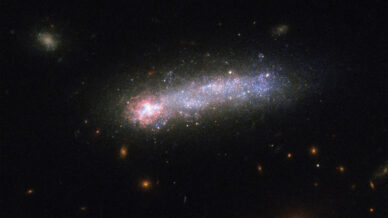
Dwarf galaxies: the small inhabitants of the Cosmos
The most common galaxies in the Universe are also the smallest of them, and the hardest to study. They host secrets about how might have been born the great galaxies that we see today. An article by Patricio Lagos on National Geographic Portugal.
Read more

Light Pollution
Light excess doesn’t occur in cities only – it reaches remote locations, such as natural reserves, affecting animals and plants, and also humans.
Read more

Interactive microsite “Music of the Stars”
Explore, through interactive diagrams, some of the concepts of the physics of the stars
Read more

Scientists call for the preservation of the night sky, an intangible heritage of Humankind
The night sky is becoming degraded in a dramatic way, due to human activities. Scientists are calling for the mobilization of the scientific
Read more

Do black holes have the answer to the accelerated expansion of the Universe?
An international team, with the participation of the IA, suggests that the mass of black holes increases with the scale of the Universe, and might be concentrations of dark energy.
Read more

Black holes, judo and radiotelescopes
In the podcast Caravela Cósmica, Hugo Messias shared his academic path and spoke about his current job at the ALMA Observatory, in Chile.
Read more

“ET – A Solar System Adventure” board game
At school or with the family, the IA invites everyone to explore different worlds in the Solar System, some of which real targets
Read more

How to detect far away planets?
In clear and accessible language, methods and concepts such as spectroscopy, radial velocities, photometry, electromagnetic spectrum or Doppler effect are explained and deconstructed by Ana Rita Silva from the IA and FCUP.
Read more

